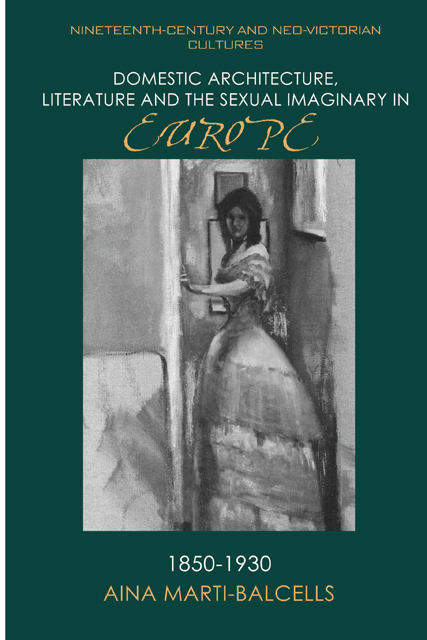Book contents
- Frontmatter
- Contents
- Series Preface
- Dedication
- Introduction
- 1 Adultery and the Subversion of Architectural Prescriptiveness in Madame Bovary and The Return of the Native
- 2 Sexual Accessibility and Exhibitionism: Glass in La Curée
- 3 Glass Dwellings and the Dissolution of Adultery in Fontane’s L’Adultera
- 4 Domestic and Sexual Circulation in Huysmans’ En ménage
- 5 Vienna: Towards a New Domestic Imaginary
- Bibliography
- Index
Introduction
Published online by Cambridge University Press: 02 June 2023
- Frontmatter
- Contents
- Series Preface
- Dedication
- Introduction
- 1 Adultery and the Subversion of Architectural Prescriptiveness in Madame Bovary and The Return of the Native
- 2 Sexual Accessibility and Exhibitionism: Glass in La Curée
- 3 Glass Dwellings and the Dissolution of Adultery in Fontane’s L’Adultera
- 4 Domestic and Sexual Circulation in Huysmans’ En ménage
- 5 Vienna: Towards a New Domestic Imaginary
- Bibliography
- Index
Summary
In the last decades of the nineteenth century, two phenomena were taking place in the main European capitals: an unprecedented number of large-scale building projects that shifted the urban landscape, and another seemingly unprecedented proliferation of sexual discourses by the emergent field of sexology. These two events, apparently so unrelated to each other, appear to have strong connections when observed through the lenses of literature. In Pot-Bouille (1882), Zola fills a new apartment building with hysterical women that by osmosis resemble the domestic spaces in which they live. The notion of sick building syndrome appears in its embryonic form in Zola’s text. But Pot-Bouille also makes a display of new sexual neuroses that were being taxonomised at the same time that new private residences appeared as a symbol of the new Paris of the Second Empire. By placing a range of sexual pathologies within a new apartment building aimed for the middle classes, Zola is hinting at a relationship between new architectural designs and sexuality. In Pot-Bouille, new architectures and sexual pathologies meet at the space of domesticity. Home is the place par excellence where we observe the interplay between sexuality and architecture; not in terms of gendered spaces but in the ways in which sexual pathologies and architectural forms shape each other.
A wide range of literary production unearths the not so obvious relationship between domestic architecture and sexuality, both architectural and sexual discourses embedded within the medical parameters of the normal/normative and the abnormal or pathological. While literature conforms the imagined spaces in which the relationships between sexuality and domestic architecture become visible, it is through the application of the concept of normality to the usages of the space and the body that both sexuality and home partake in the same prescriptive pattern. Thus, at a conceptual level, architecture relates to the medical field through notions of the normal and normativity. Considering the appropriation architects made of medical terminology on a large scale, this is not surprising. Architects approached their practice as a medical discipline, which resulted in a strong prescriptive field that aimed at regulating how people lived and used their domestic spaces.
- Type
- Chapter
- Information
- Publisher: Edinburgh University PressPrint publication year: 2022



